Abstract
Over a period of five years 12 patients underwent electrophysiological studies for the investigation of recurrent tachycardias which showed ventricular pre-excitation. Nine patients had a type B pattern and two a type A. One patient had episodes of both types. Dual atrioventricular nodal pathways were found in six of seven patients with atrioventricular nodal re-entrant tachycardia mechanisms. Single direct atrioventricular accessory pathways were present in four patients, single nodoventricular pathways in five, and multiple pathways in three. Twenty one tachycardias were induced, of which 13 showed ventricular pre-excitation. Five patients had nodoventricular pathway conduction during atrioventricular nodal tachycardia and one during atrioventricular re-entrant tachycardia. Only three patients had simple antidromic tachycardia and one additional atrioventricular nodal tachycardia with bystander atrioventricular accessory conduction. Three patients had three different tachycardias, three had two types, and six had one type. Thus junctional tachycardias showing ventricular pre-excitation are often associated with multiple mechanisms and complex anatomical and functional substrates. An accessory pathway was an essential component in only six of 13 tachycardias showing ventricular pre-excitation. Determination of the tachycardia mechanism requires detailed study and analysis.
Full text
PDF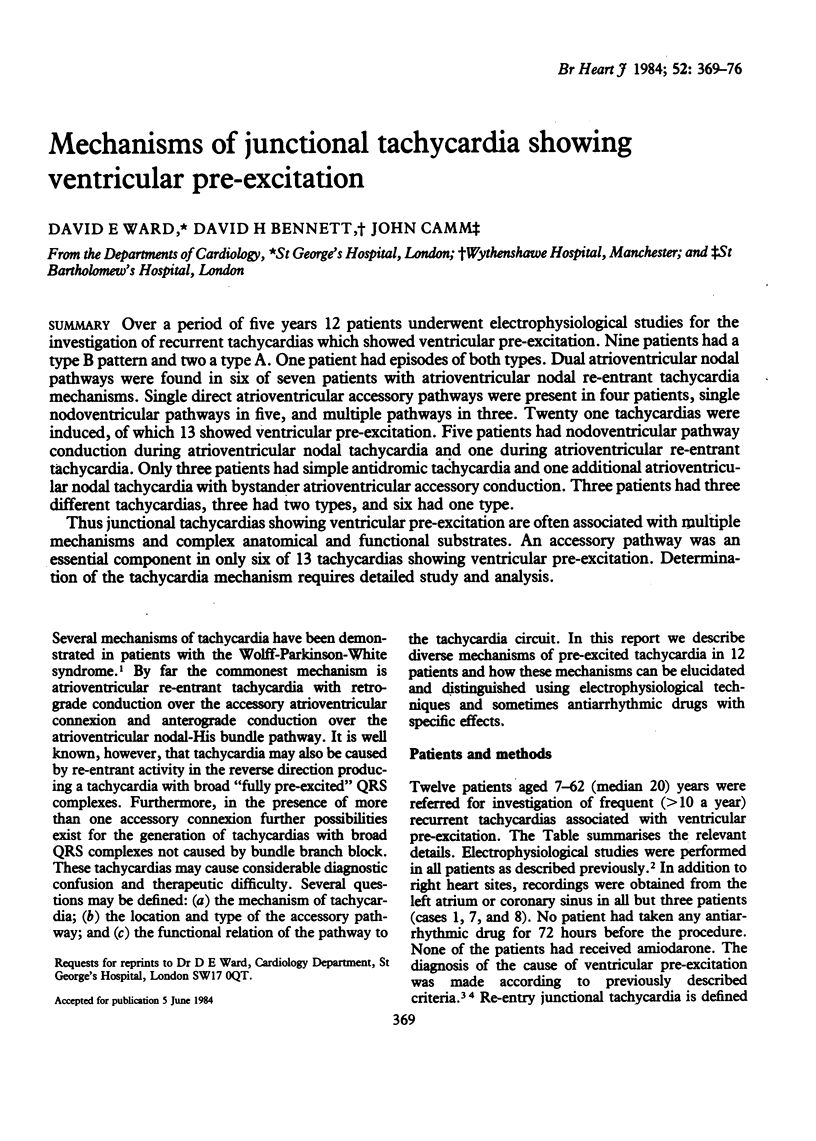
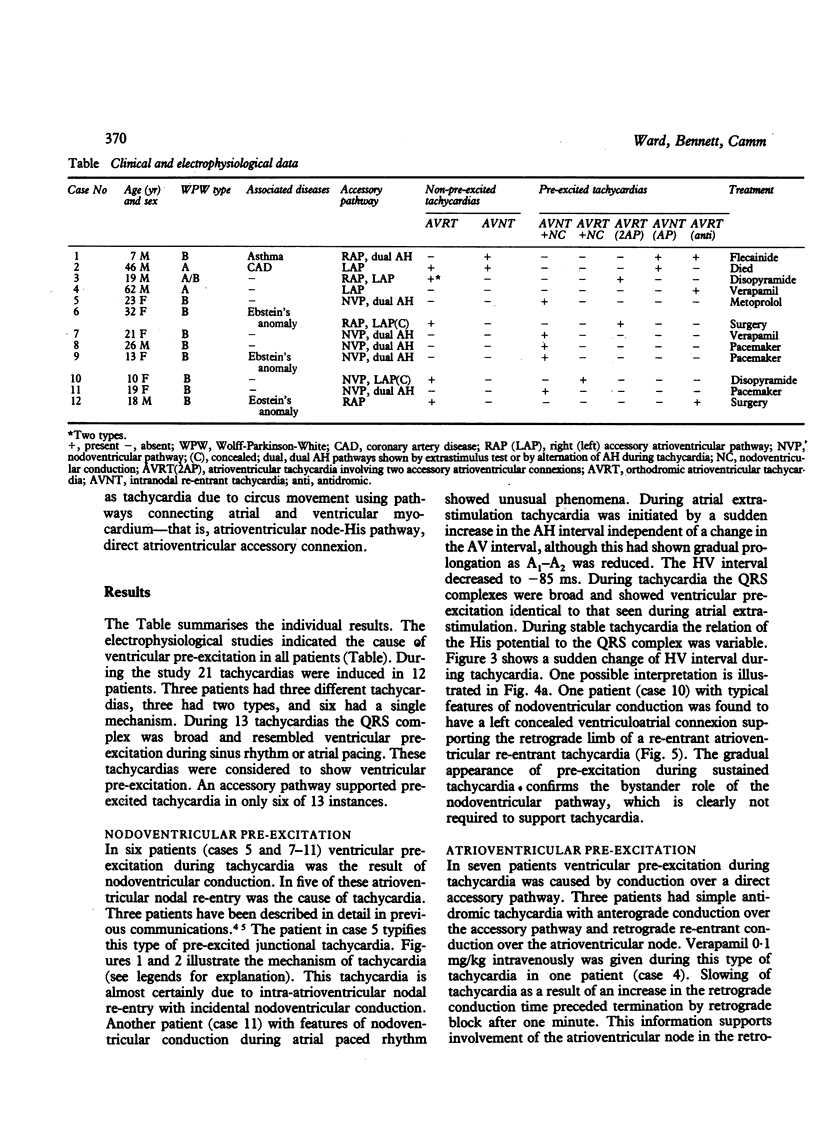
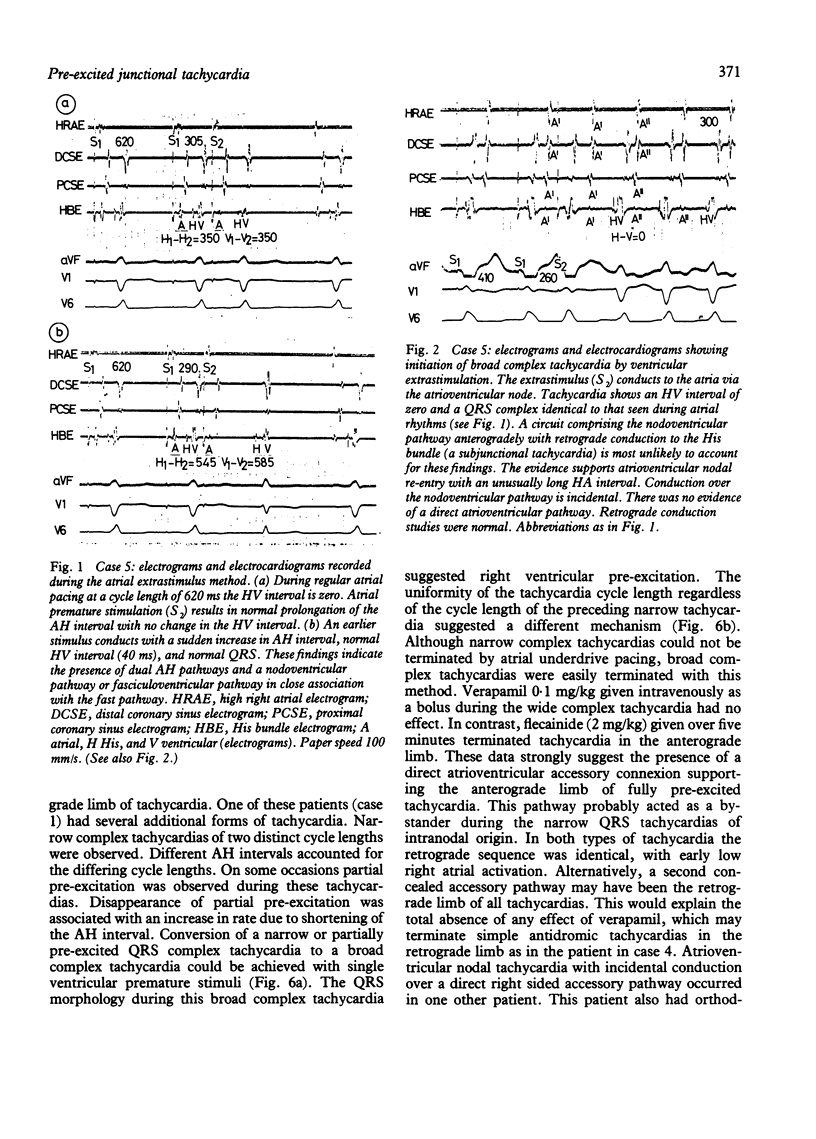
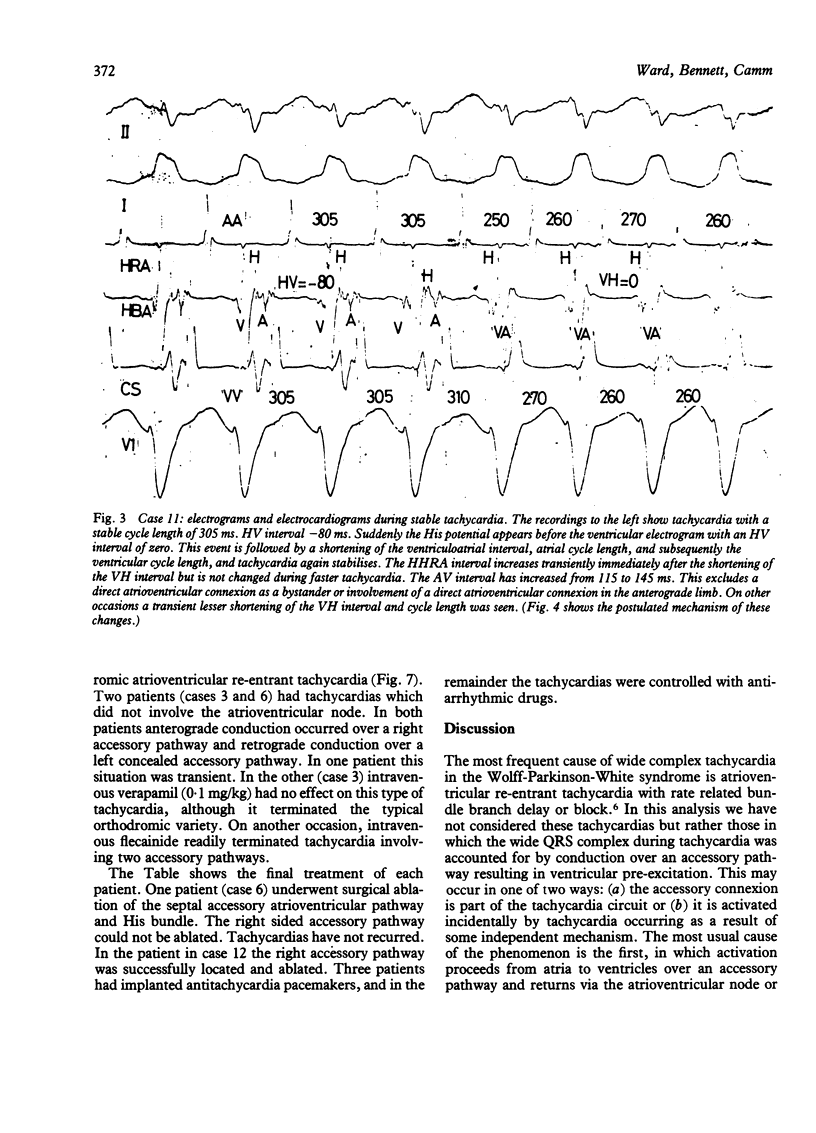
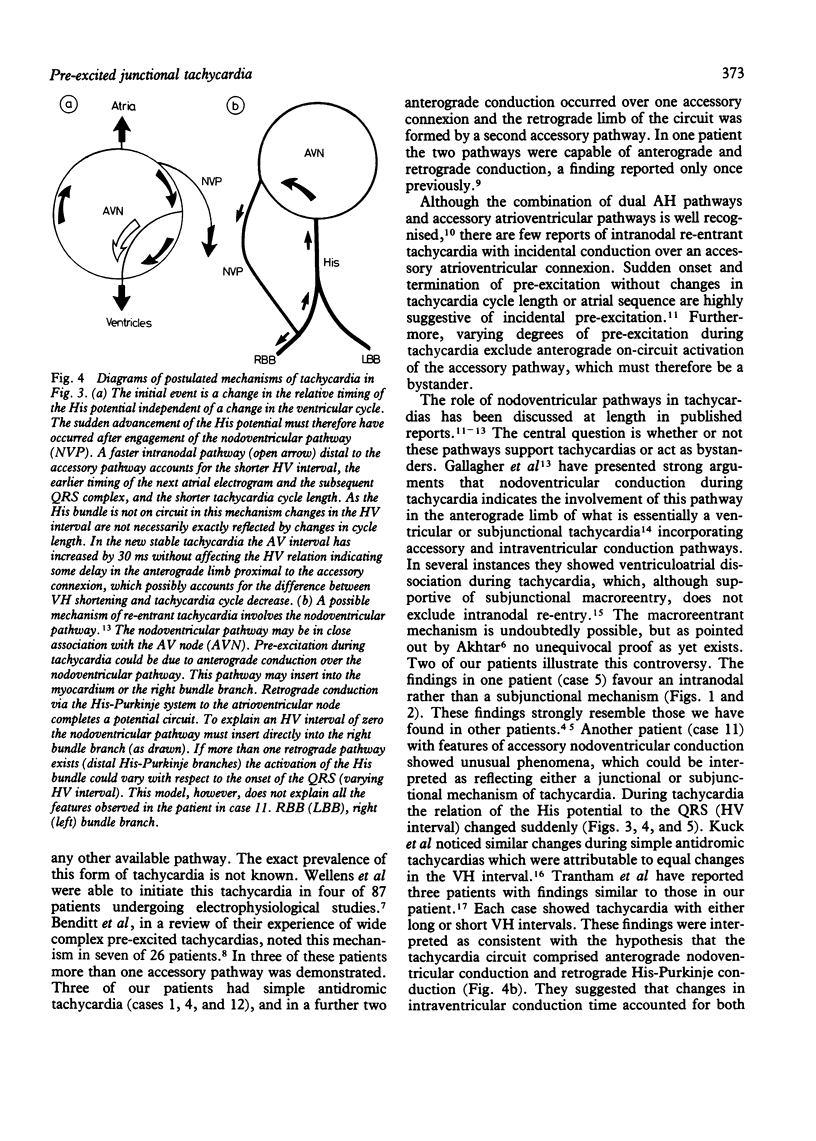
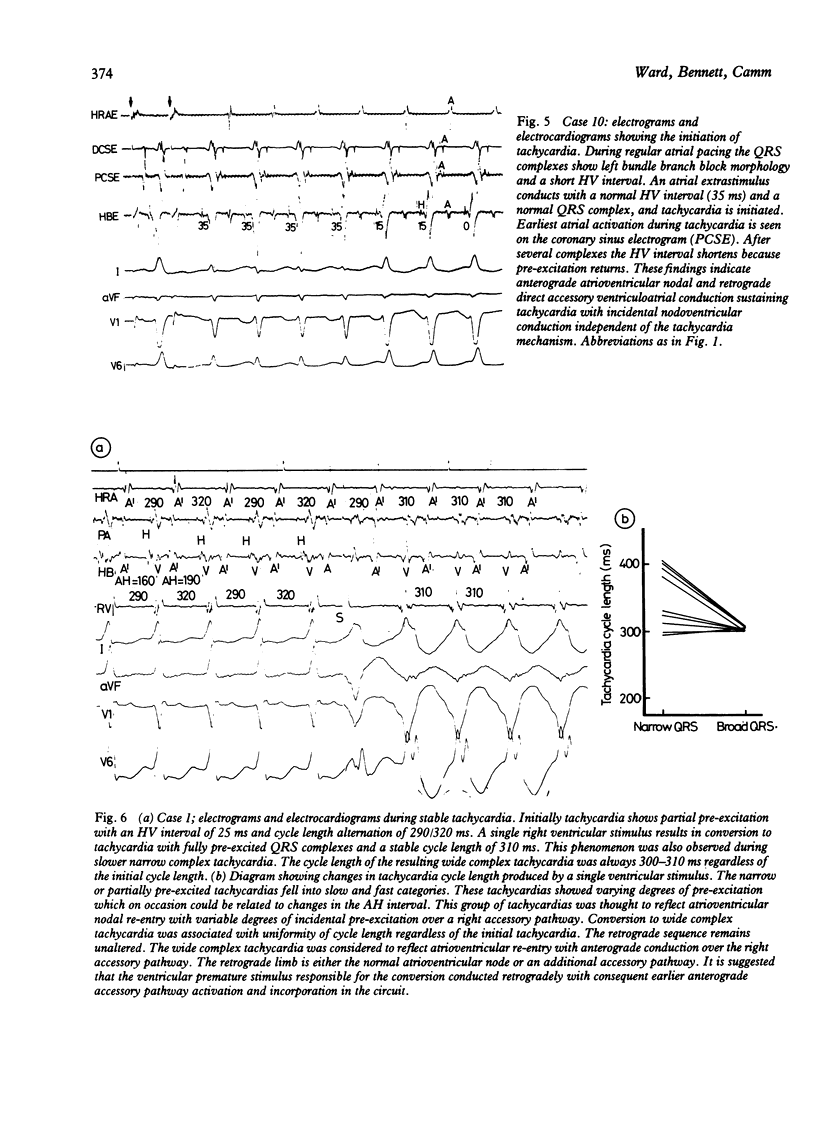
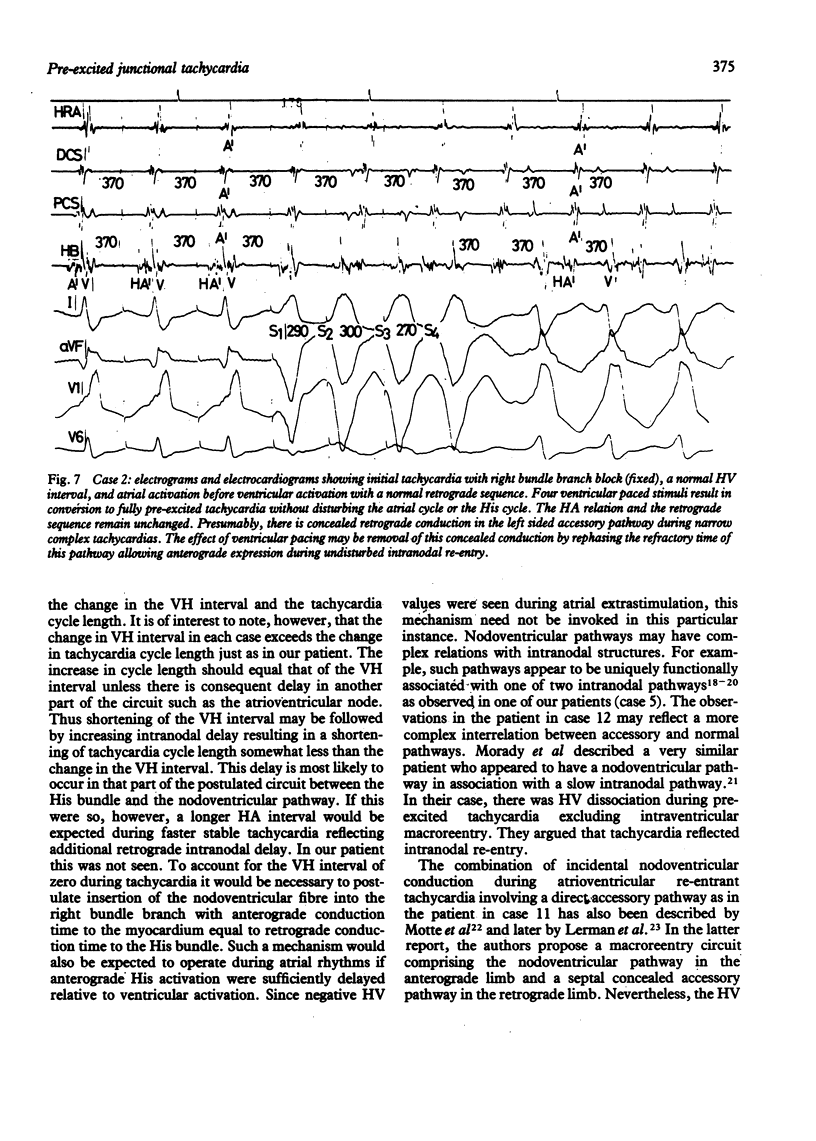
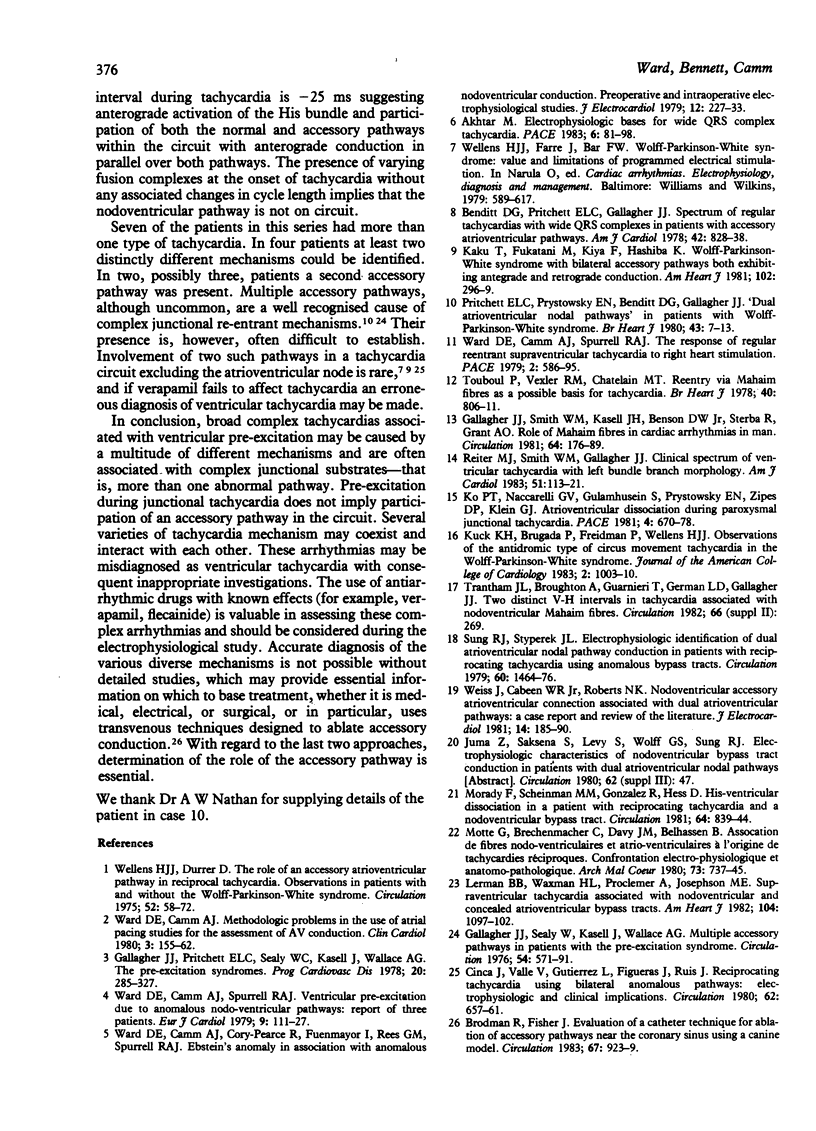
Selected References
These references are in PubMed. This may not be the complete list of references from this article.
- Akhtar M. Electrophysiologic bases for wide QRS complex tachycardia. Pacing Clin Electrophysiol. 1983 Jan;6(1 Pt 1):81–98. doi: 10.1111/j.1540-8159.1983.tb06585.x. [DOI] [PubMed] [Google Scholar]
- Benditt D. G., Pritchett E. L., Gallagher J. J. Spectrum of regular tachycardias with wide QRS complexes in patients with accessory atrioventricular pathways. Am J Cardiol. 1978 Nov;42(5):828–838. doi: 10.1016/0002-9149(78)90104-2. [DOI] [PubMed] [Google Scholar]
- Brodman R., Fisher J. D. Evaluation of a catheter technique for ablation of accessory pathways near the coronary sinus using a canine model. Circulation. 1983 Apr;67(4):923–929. doi: 10.1161/01.cir.67.4.923. [DOI] [PubMed] [Google Scholar]
- Cinca J., Valle V., Gutierrez L., Figueras J., Rius J. Reciprocating tachycardia using bilateral anomalous pathways: electrophysiologic and clinical implications. Circulation. 1980 Sep;62(3):657–661. doi: 10.1161/01.cir.62.3.657. [DOI] [PubMed] [Google Scholar]
- Gallagher J. J., Pritchett E. L., Sealy W. C., Kasell J., Wallace A. G. The preexcitation syndromes. Prog Cardiovasc Dis. 1978 Jan-Feb;20(4):285–327. doi: 10.1016/0033-0620(78)90015-4. [DOI] [PubMed] [Google Scholar]
- Gallagher J. J., Sealy W. C., Kasell J., Wallace A. G. Multiple accessory pathways in patients with the pre-excitation syndrome. Circulation. 1976 Oct;54(4):571–591. doi: 10.1161/01.cir.54.4.571. [DOI] [PubMed] [Google Scholar]
- Gallagher J. J., Smith W. M., Kasell J. H., Benson D. W., Jr, Sterba R., Grant A. O. Role of Mahaim fibers in cardiac arrhythmias in man. Circulation. 1981 Jul;64(1):176–189. doi: 10.1161/01.cir.64.1.176. [DOI] [PubMed] [Google Scholar]
- Kaku T., Fukatani M., Kiya F., Hashiba K. Wolff-Parkinson-White syndrome with bilateral accessory pathways both exhibiting antegrade and retrograde conduction. Am Heart J. 1981 Aug;102(2):296–299. doi: 10.1016/s0002-8703(81)80024-5. [DOI] [PubMed] [Google Scholar]
- Ko P. T., Naccarelli G. V., Gulamhusein S., Prystowsky E. N., Zipes D. P., Klein G. J. Atrioventricular dissociation during paroxysmal junctional tachycardia. Pacing Clin Electrophysiol. 1981 Nov;4(6):670–678. doi: 10.1111/j.1540-8159.1981.tb06250.x. [DOI] [PubMed] [Google Scholar]
- Kuck K. H., Brugada P., Wellens H. J. Observations on the antidromic type of circus movement tachycardia in the Wolff-Parkinson-White syndrome. J Am Coll Cardiol. 1983 Nov;2(5):1003–1010. doi: 10.1016/s0735-1097(83)80251-4. [DOI] [PubMed] [Google Scholar]
- Lerman B. B., Waxman H. L., Proclemer A., Josephson M. E. Supraventricular tachycardia associated with nodoventricular and concealed atrioventricular bypass tracts. Am Heart J. 1982 Nov;104(5 Pt 1):1097–1102. doi: 10.1016/0002-8703(82)90446-x. [DOI] [PubMed] [Google Scholar]
- Morady F., Scheinman M. M., Gonzalez R., Hess D. His-ventricular dissociation in a patient with reciprocating tachycardia and a nodoventricular bypass tract. Circulation. 1981 Oct;64(4):839–844. doi: 10.1161/01.cir.64.4.839. [DOI] [PubMed] [Google Scholar]
- Motté G., Brechenmacher C., Davy J. M., Belhassen B. Association de fibres nodo-ventriculaires et atrio-ventriculaires à l'origine de tachycardies réciproques. Confrontation électro-physiologique et anatomo-pathologique. Arch Mal Coeur Vaiss. 1980 Jun;73(6):737–745. [PubMed] [Google Scholar]
- Pritchett E. L., Prystowsky E. N., Benditt D. G., Gallagher J. J. 'Dual atrioventricular nodal pathways" in patients with Wolff-Parkinson-White syndrome. Br Heart J. 1980 Jan;43(1):7–13. doi: 10.1136/hrt.43.1.7. [DOI] [PMC free article] [PubMed] [Google Scholar]
- Reiter M. J., Smith W. M., Gallagher J. J. Clinical spectrum of ventricular tachycardia with left bundle branch morphology. Am J Cardiol. 1983 Jan 1;51(1):113–121. doi: 10.1016/s0002-9149(83)80021-6. [DOI] [PubMed] [Google Scholar]
- Sung R. J., Styperek J. L. Electrophysiologic identification of dual atrioventricular nodal pathway conduction in patients with reciprocating tachycardia using anomalous bypass tracts. Circulation. 1979 Dec;60(7):1464–1476. doi: 10.1161/01.cir.60.7.1464. [DOI] [PubMed] [Google Scholar]
- Touboul P., Vexler R. M., Chatelain M. T. Re-entry via Mahaim fibres as a possible basis for tachycardia. Br Heart J. 1978 Jul;40(7):806–811. doi: 10.1136/hrt.40.7.806. [DOI] [PMC free article] [PubMed] [Google Scholar]
- Ward D. E., Camm A. J. Methodologic problems in the use of atrial pacing studies for the assessment of A-V conduction. Clin Cardiol. 1980 Jun;3(3):155–162. doi: 10.1002/clc.4960030301. [DOI] [PubMed] [Google Scholar]
- Ward D. E., Camm A. J., Spurrell R. A. The response of regular re-entrant supraventricular tachycardia to right heart stimulation. Pacing Clin Electrophysiol. 1979 Nov;2(6):586–595. doi: 10.1111/j.1540-8159.1979.tb04277.x. [DOI] [PubMed] [Google Scholar]
- Ward D. E., Camm A. J., Spurrell R. A. Ventricular preexcitation due to anomalous nodo-ventricular pathways: report of 3 patients. Eur J Cardiol. 1979 Feb;9(2):111–127. [PubMed] [Google Scholar]
- Ward D. E., Camm J., Cory-Pearce R., Fuenmayor I., Rees G. M., Spurrell R. A. Ebstein's anomaly in association with anomalous nodoventricular conduction. Pre-operative and intra-operative electrophysiological studies. J Electrocardiol. 1979;12(2):227–233. doi: 10.1016/s0022-0736(79)80034-5. [DOI] [PubMed] [Google Scholar]
- Weiss J., Cabeen W. R., Jr, Roberts N. K. Nodoventricular accessory atrioventricular connection associated with dual atrioventricular pathways: a case report and review of the literature. J Electrocardiol. 1981;14(2):185–190. doi: 10.1016/s0022-0736(81)80055-6. [DOI] [PubMed] [Google Scholar]
- Wellens H. J., Durrer D. The role of an accessory atrioventricular pathway in reciprocal tachycardia. Observations in patients with and without the Wolff-Parkinson-White syndrome. Circulation. 1975 Jul;52(1):58–72. doi: 10.1161/01.cir.52.1.58. [DOI] [PubMed] [Google Scholar]


